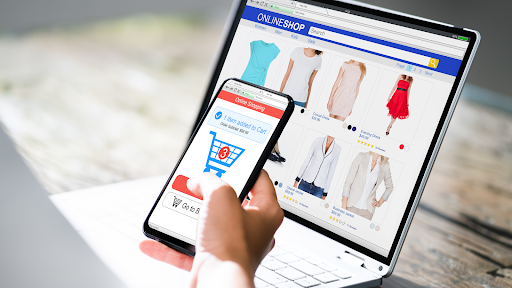With over 2.13 billion active monthly users worldwide, Facebook remains the most popular social media platform year after year. And while the beginning of 2018 has seen the network’s trust put into question amid a large-scale data breach, projections still see Facebook’s user base increasing well into 2019. In short, Facebook remains an unbeatable force in the digital (and social) sphere.
Taking advantage of Facebook’s resources used to be a simple formula: post frequently, engage occasionally, and expect your customers or clients to follow on your brand’s journey. This is not the case in today’s highly-competitive landscape.
Setting goals specific for Facebook has become increasingly important. While these may vary according to industry, the three main goals to keep in mind are: to increase Facebook “likes”, to improve engagement, and to increase sales. These big three are umbrella goals that should be monitored frequently. If you’re unsure of where to begin, we’re here to help. Here are 18 ways to help you work towards your goals of growing your business with Facebook:
1. Email existing prospects
While Facebook is ubiquitous, many of your current and potential prospects may still be unaware that you have a Facebook page. Craft an email that reminds people of your online presence, and get them excited to see your work. In addition, consider putting a link to your Facebook (and all social channels for that matter) in your email signature.
2. Embed a website plugin
Adding a little Facebook widget to any (or all) pages of your website will help boost the likelihood of current or prospective customers heading to your page. Provide the functionality for readers to “like” your page even when they are not on Facebook. Given the sheer popularity of Facebook, and knowing that the platform has 1.15 billion mobile daily active users, sending your prospects to your Facebook page will be beneficial rather than detrimental.
3. Create a landing page that encourages “likes”
Even when a person is not on Facebook, they can still “like” your page. Adding a “like” button on a landing page is an easy way to get clicks, while keeping the reader on your website at the same time.
4. Create exclusive content that’s only available when you “like” a page
As simple as changing a video or image post from “private” to “public on your Facebook page, this small amount of exclusivity can make them feel like they are part of the ‘club’ that you have cordially invited them to join.
5. Partner with influencers
With an extensive reach and a community of committed followers, partnering with Facebook experts will spread the word of your brand in an indirect way; resulting in a promotion that looks casual and organic, rather than pushy.
6. Join Facebook groups and share your content
Without being overbearing or coming across as too self-promotional, joining Facebook groups that relate to your industry expertise is a great way to connect with B2C and B2B prospects who would otherwise have not come across your page. Consider it a more colloquial form of LinkedIn groups, wherein you are sharing your vision, but also commenting on others’.
7. Embed email subscriptions into your Facebook page
Adding this feature is a solid way to help generate leads from the prospects heading to your page. This can be as simple as “sign up” button that links back to your landing page.
8. Conduct polls
Found in your “status” bar, a poll can heighten engagement between you and your current followers and prospects alike. You can also Implement ‘third party” survey tools, like the popular Survey Monkey and Typeform, which can provide further resources than the basic Facebook “questions” feature.
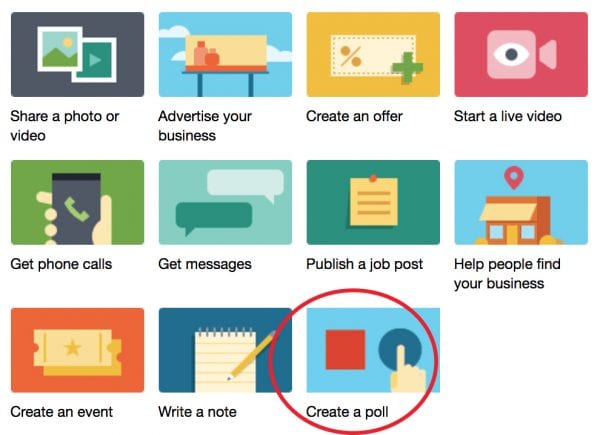
9. Share your blogs and any relevant news
Immediately after your blogs go up, publish them on Facebook! In addition, create enticing, action-oriented copy that will further propel your audience to click back to your site. Encouraging your peers and business partners to share any news or articles will also maximize the post’s reach.
10. Respond in a timely manner
When comments or messages come in, make sure to respond quickly and eloquently. If you have a slow response rate, Facebook will point this out directly on your page. A good response rate will be listed in green, whereas a bad one is listed in shades of yellow, orange, and red.
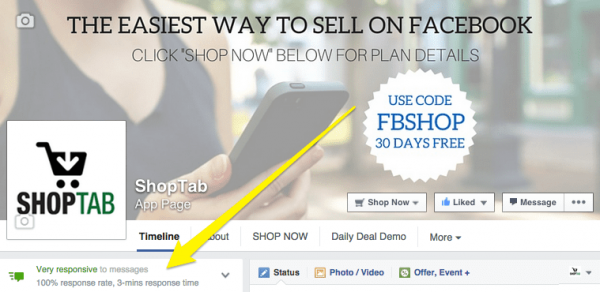
11. Run a Facebook offer or competition
To sweeten the pot, create a set of rules such as: sharing the post, liking the post, and tagging a friend to be able to enter. Here is an example of a contest that garnered thousands of shares:
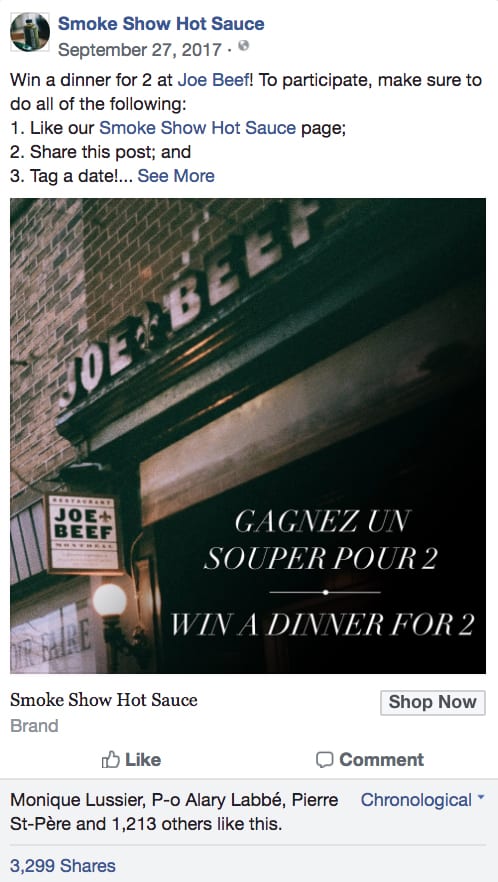
12. Share your SlideShare presentations
Since LinkedIn has embedded SlideShare into its platform, your presentations now have even more reach, and across multiple platforms. Share your presentations on Facebook to show your business savvy.
13. Consider an F-Commerce function
Convert and sell within your Facebook page with the Facebook commerce (F-Commerce) function. With the aim of increasing conversions, having the “shop” feature on your Facebook is an excellent way to amass further e-commerce transactions.
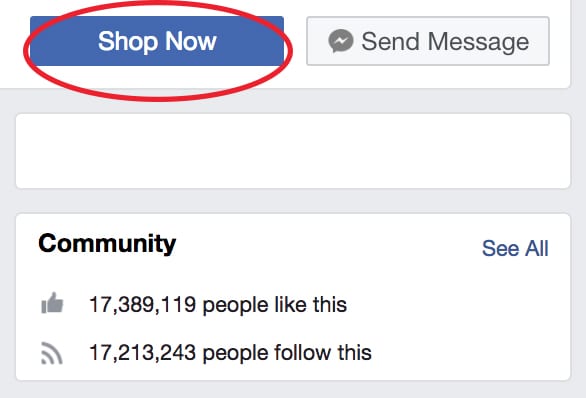
14. Share your visual media
The medium is the message! Media that is visual, like static images, Gifs, and Facebook live videos, are always more appealing when you’re in direct competition with viral videos for views. Create media that’s appealing to the eye.
15. Boost your posts
The act of “boosting” a post will require some pocket change on your end, but will give you a great ROI. Boosting a post will not only extend your post’s reach, but will also give you the ability to narrow who to target, and where to target.
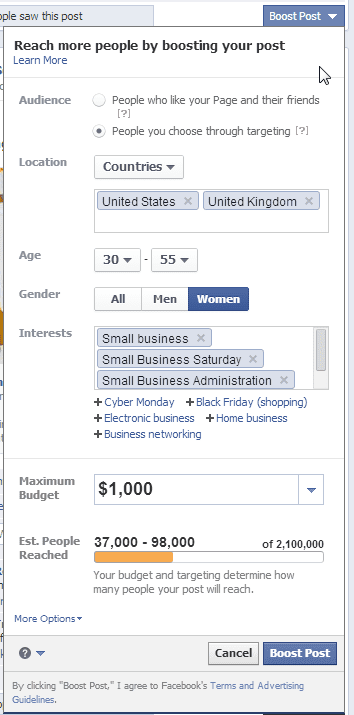
16. Use Facebook ads
Facebook ads are categorized in a variety of ways. Use the ad type that’s most appropriate to your business goals.
There’s the popular (and effective) domain ad, which is comprised of a single image with a link to your website below. You also have the multi-product ad, which shows a carousel of images that lead to your domain. This a great way to test which products your audience desires the most.
Offer ads are a bit different. Instead of just sending people to your website, these ads target those familiar with your brand and usually offer discount codes with an expiration date.
Video ads (which are self-explanatory) work well for both brand awareness and retargeting.
Lead ads are great for collecting information from a Facebook user without them leaving the platform. Facebook will fill in as much information as possible, while the user can fill in the rest.
Here’s an example of a sponsored domain ad for the brand SSENSE;
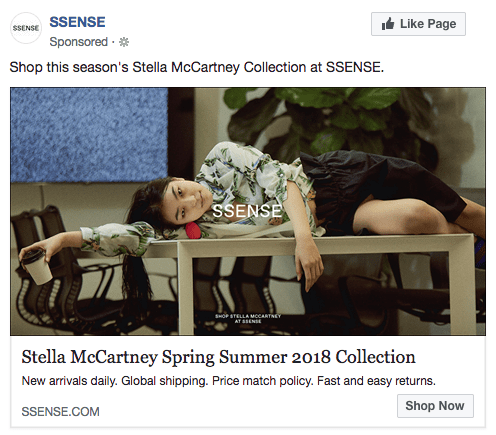
An offer ad for the brand J. Crew;
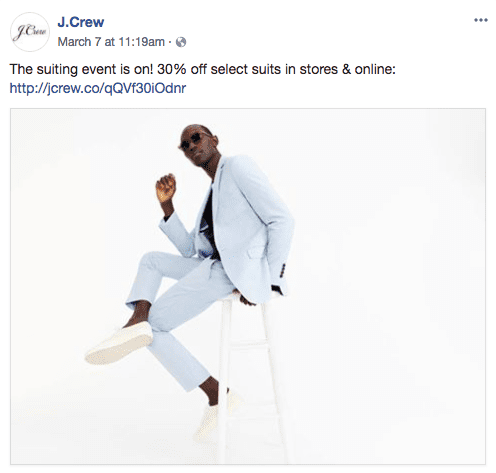
An example of a “carousel” or multi-product ad;
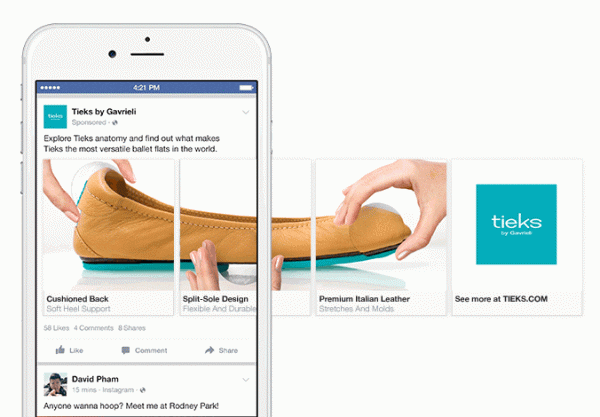
And a Facebook lead ad;
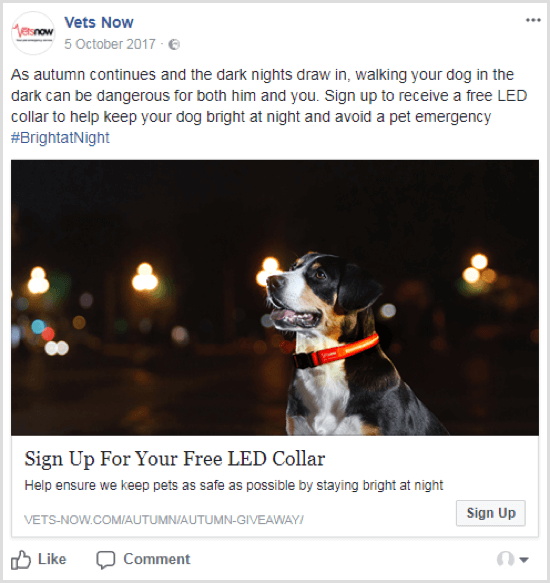
As with any ad content, Facebook ads should not just be visually compelling, but should have a prominent call to action.
17. Post at the appropriate time
Timing is everything. And while the “right” time may vary according to your industry, location, and audience, there exist a set of general guidelines to abide by when scheduling your Facebook posts.
18. Consider marketing automation
Use a marketing automation tool to gauge which posts are the most successful, and to gather intel and which ones will provide the best ROI in future. Scheduling your posts with marketing automation platform will not only keep things simplified and organized, but will help provide further analytics in regards to your page’s performance. Overall, the aim is to enhance your potential results and build your reputation.
Build to look simple, Facebook is a complex platform that can be used to every business’ advantage. The most popular social network, Facebook is forever changing and improving its performance, and ridding itself of seemingly inconsequential things like outdated metrics that could have an impact on your page’s performance. That being said, always monitor your Facebook page, treat it with care, and watch those sales flourish.
Don’t forget to share this article
